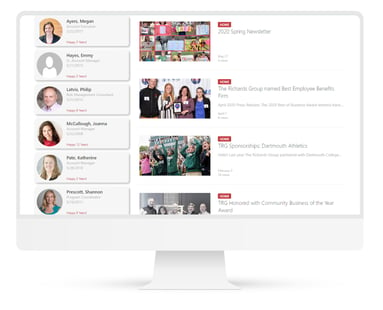Recently I have been reading a lot about the Olympic stadiums and noticed that most countries face the same issue when hosting a worldwide sporting event. Once a country is chosen as a host, extensive preparations are made to ensure a successful and memorable experience. Billions of dollars are invested in developing infrastructure, including roads, hotels, and stadiums, as well as upgrading rail and traffic systems. Unfortunately, many countries encounter a disappointing aftermath. The stadiums, once vibrant and full of life, lie dormant, slowly deteriorating over time.
While I am not one to write politically charged posts, I sometimes see the same mindset with corporate information architecture and intranets. Many intranets that exist were built without the future in mind and subsequently have crumbled and no longer provide the benefits that were intended or that they once had.
The evolution of SharePoint Intranet, in some ways, is similar to preparing for a major global event, like hosting the Olympics. Just as these events demand foresight, adaptability, and a deep understanding of the audience, so does the crafting of a future-proof SharePoint Intranet in today's dynamic business landscape.
Strategic Insights from Global Events
 Drawing lessons from hosting global events, we underscore the importance of long-term planning and sustainability. The event's preparation mirrors our approach to SharePoint Intranet development, emphasizing robust infrastructure and enduring value.
Drawing lessons from hosting global events, we underscore the importance of long-term planning and sustainability. The event's preparation mirrors our approach to SharePoint Intranet development, emphasizing robust infrastructure and enduring value.
The Evolving Workplace
The emergence of remote and hybrid work models demands intranets that transcend physical boundaries. SharePoint's power in virtual collaboration is pivotal. Yet, it's not just about connectivity; security plays a crucial role. In an era of heightened cyber threats and stringent data regulations, securing and managing content is crucial. At Aerie, we don't just build intranets; we architect digital ecosystems that thrive amidst these challenges.
Real-World Success: Streamlining Team Management with SharePoint

Our collaboration with a BioTech firm exemplifies our commitment to delivering tailored solutions. This solution efficiently displays roles and members of project teams on SharePoint, integrating seamlessly with Microsoft Teams, Azure Active Directory, and Microsoft Graph. This innovation automated the manual process of role assignment, saving time, reducing errors, and enhancing project coordination.
At Aerie, we guide and equip businesses with SharePoint solutions that are not only technologically advanced but also meticulously aligned with evolving business needs and work models. Contact us today to create an intranet solution that not only meets today's demands but also paves the way for tomorrow's successes.
Share


